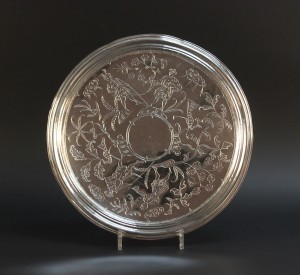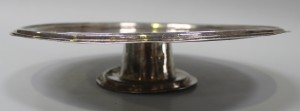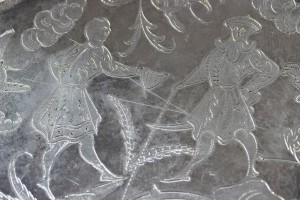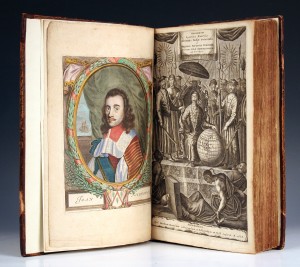



Sussex found herself at the centre of the political upheavals of the 17th Century as Charles II escaped to France through the port of Shoreham, closely pursued by Oliver Cromwell’s forces.
The last quarter of the 17th century in England witnessed a revival of interest in silver objects. During the period of Oliver Cromwell’s Commonwealth, much silver was melted down for currency. Charles II’s restoration in 1660 was marked by a renewed sense of security, which resulted in both royalty and nobility indulging their passion for silver during what has sometimes been termed ‘England’s Silver Age’.
The silver footed salver or tazza illustrated, dating from the reign of James II, Charles’ brother and successor to the throne, was discovered by Toovey’s specialist valuer William Rowsell. “I found the salver amongst a collection of modest silver-plated items, brought in to our salerooms on one of our regular valuation days,” William comments. “It’s always exciting when you come across something wonderful and unexpected in a bag! The owner did not even realise it was silver, let alone an important piece.” The footed salver was brought in by a gentleman dealing with items collected by his late father, who had been an antiques dealer in the middle part of the 20th century. It was made by silversmith Benjamin Yate and assayed in London in 1688. Subsequent research confirmed the rarity of the flat-chased decoration featuring Chinese gentlemen, birds and foliage, punched into the silver in dots and lines.
The fashion for all things Chinese came from the influence of oriental items brought back by the Dutch and British East India companies. These fanciful chinoiserie vignettes would have been drawn from the artist’s imagination, rather than from any actual first-hand visual recollection of China and its people. The book ‘Legatio Batavica ad Magnum Tartariae Chamum Sungteium…’ by Jan Nieuhoff was first published in Amsterdam in 1668. This book is thought by silver historians to be the likely inspiration for much of the flat-chased chinoiserie decoration of silver from this period. The book’s stylistic influence can be seen in the plate from a copy of this volume sold in a Toovey’s specialist auction for £850.
Chinoiserie decoration on silver is a particularly English phenomenon and was mostly produced between the 1670s and 1690s. The strong similarity of figures, fauna and flora on known silver examples have led academics to question whether they may all be by a single craftsman. This form of decoration ends suddenly in 1688. It remains a mystery whether this was because of the craftsman’s death or a sudden change in taste caused by the overthrow of James II that year in the ‘Glorious Revolution’, when William of Orange invaded England.
The James II silver footed tazza will be offered as Lot 350 with an estimate of £30,000-£50,000 in Toovey’s specialist silver auction on Wednesday 21st May 2014, commencing at 1pm.
By Revd. Rupert Toovey. Originally published on 7th May 2014 in the West Sussex Gazette.